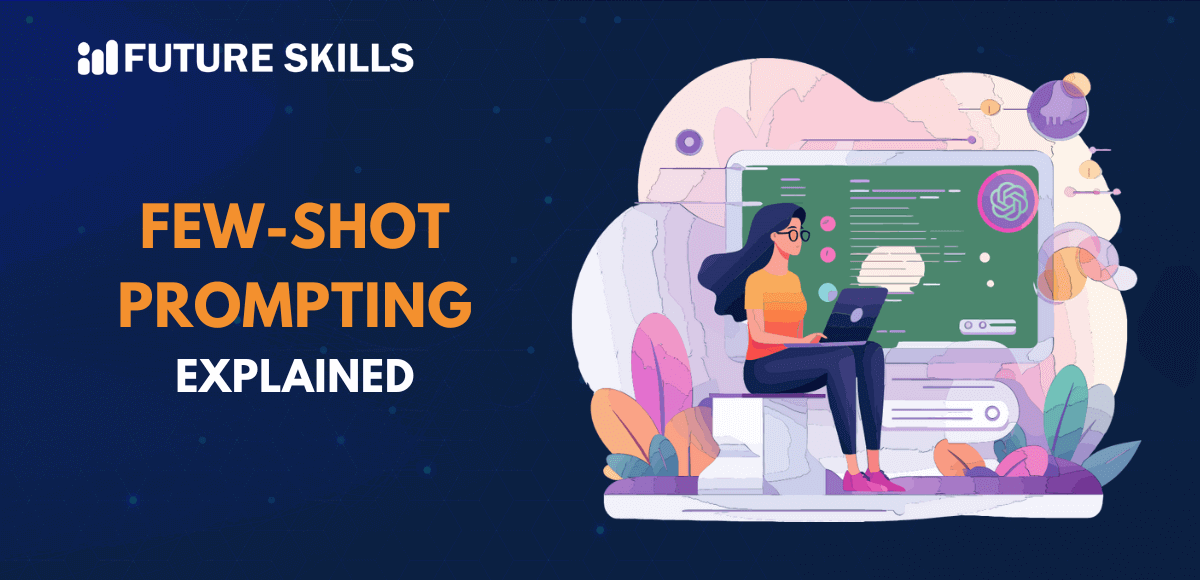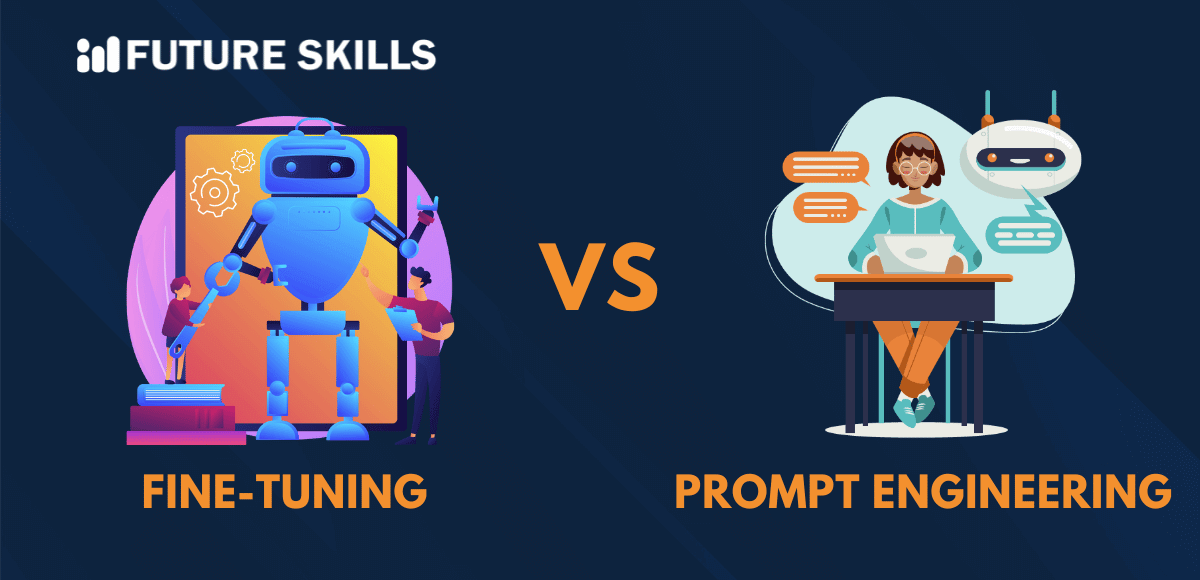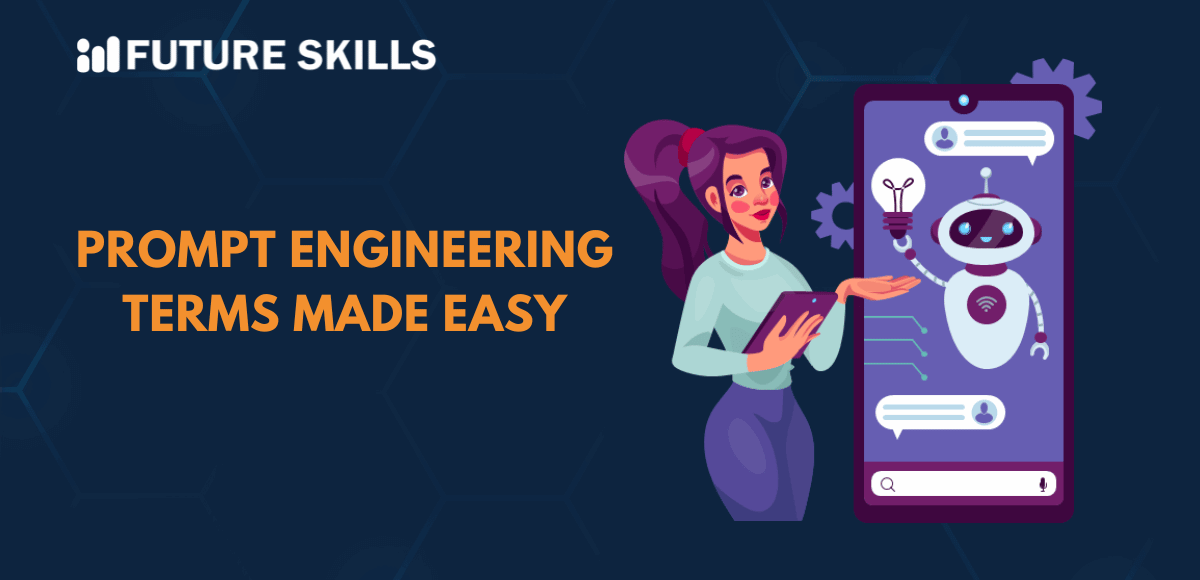Prompts are the trusted pawns for any player who wants to experiment with prompt engineering. You can try them to determine how a large language model or LLM would work for a specific task. On the other hand, prompts also serve a valuable role in improving LLMs and preparing them for use in a wide variety of tasks. The applications of few-shot prompting ChatGPT showcases in different scenarios can stoke the curiosity of any individual. Let us deep dive and learn about few-shot prompting.
Therefore, it is important to learn about few-shot prompting to work with LLMs and extract the best responses from the models. Prompt engineering is an integral discipline of AI as it helps in the development and optimization of prompts for the effective use of language models to address different types of applications and research topics. Let us find out how few-shot prompting is an important highlight in the prompt engineering landscape.
Are you looking to build a career in prompt engineering? Become a job-ready certified prompt engineer with our accredited Certified Prompt Engineering Expert (CPEE)™ Program.
Why Should You Learn about Few-Shot Prompting?
The foremost reason to learn few-shot prompting revolves around LLMs. Large language models depend on prompts to generate the desired responses for specific tasks. As a matter of fact, prompt engineering skills can help you with a better understanding of the strengths and limitations of LLMs. Researchers utilize prompt engineering to improve the capacity of LLMs to address different types of general and complex tasks.
Developers leverage techniques like few-shot prompting for designing robust LLMs. You must learn about few-shot prompting as it would determine your expertise in using LLMs and generative AI systems. Anyone who wants to experiment with generative AI must familiarize themselves with the intricacies of the working mechanism of few-shot prompting.
What is the Fundamental Concept of Few-Shot Prompting?
The best way to find out how few-shot prompting can help you interact with LLMs involves learning its definition. The answers to “What is few-shot prompting?” don’t have to focus only on the technical aspects. On the contrary, you can opt for a simpler explanation to understand what few-shot prompting actually involves.
You can think of few-shot prompting as the process of completing a quick course before you work on new tasks. For example, you may be asked to cook a specific dish that you have never made before. Rather than hitting the kitchen right away, you can look for some guidance in the form of recipes or video tutorials for cooking the dish.
With the help of a few examples, you can understand the basic requirements for cooking the dish, such as the ingredients needed for the dish, the preparation required before cooking, and how the final product would look. How does this relate to few-shot prompting examples and the ways in which it helps AI systems?
In the case of few-shot prompting, an AI model or language model receives a few specific examples for the new task. The examples serve as quick recipes that help the AI model use its general knowledge to achieve a new task. The examples can help the AI model change its approach to a specific task based on inferences from the examples.
Learn about the basic prompt example for LLMs to understand how to create precise prompts and utilize the potential of AI.
What are the Most Common Examples of Few-Shot Prompting?
The ideal approach to understanding how few-shot prompting works would involve an overview of the examples. You must look at the examples that use few-shot prompting to understand how it works. The common tasks in a guide on few-shot prompting explained for beginners would focus on NLP tasks such as content creation or code generation. Here is an explanation of the different ways in which you can use few-shot prompting for interacting with LLMs for specific tasks.
-
Content Generation
The foremost example that you can use to learn about few-shot prompting is content generation. Let us assume that a digital marketing firm wants to utilize AI to create customized content tailored to the needs of different clients. The examples of few-shot prompting ChatGPT exhibits for such tasks can help you understand the requirements of a prompt in such cases.
You would have to create a prompt that serves distinct purposes, such as creating content according to a specific tone and style. Another important purpose of few-shot prompting involves ensuring that the AI models are scalable and can adapt to the requirements of different clients.
You can use the following few-shot prompting example to generate content for clients of a digital marketing firm.
Your task is to create content for ‘client name.’ Here is the background information about the client's ‘client description.’ Take a look at the following examples of content we have created for the client in the past. Example 1, Example 2, Example 3
Here is the latest brief that you must use to create new content.
‘Brief description’
The examples highlighted in the prompt must include their respective briefs and the content generated with them. Such types of few-shot prompting examples show that the LLM can develop a better understanding of the style and tone of content for a particular client. You can use specific formats in the prompt to enable the model for a better understanding of examples and instructions in the prompt.
-
Code Generation
Few-shot prompting is also a useful solution in prompt engineering for general yet specialized tasks such as coding. Even if coding is a common task, it requires special skills and knowledge. You can assume an example in which you want an LLM to write a function in Python for calculating the factorial of a number. The tricks to learn few-shot prompting might have you thinking why you cannot use zero-shot prompting in such cases. Here is an example of a zero-shot prompt for writing the Python function in this code generation task.
Generate a Python function to determine the factorial of a number.
On the other hand, a few-shot prompts for the code generation task would look like the following:
Here are some of the examples of Python functions. Use these examples as a reference and generate a Python function to determine the factorial of a number.
Example 1, Example 2
You will notice a clear difference between the outputs generated by the zero-shot and few-shot prompts. The answers to ‘what is few-shot prompting’ would imply that few-shot prompts are likely to help in accomplishing the desired tasks with more accuracy. A zero-shot prompt for the factorial problem would generate a brief and recursive factorial function, albeit without input validation.
On the other hand, few-shot prompts can include input checks alongside leveraging iterative approaches to ensure better usability. In a way, few-shot prompts can help you generate a more robust function that is more reliable and offers better input validation.
Enroll in our new Certified ChatGPT Professional (CCGP)™ Course. This is for every individual who wants to master ChatGPT and become a specialist.
Can You Use Multiple Prompts in Few-Shot Prompting?
One of the complex aspects of few-shot prompting is the possibility of using multiple prompts. You can use multiple prompts in few-shot prompting for specific use cases. The fundamentals of few-shot prompting explained the necessity of examples to help LLMs work according to the desired behavior. Using multiple prompts in few-shot prompting helps in pre-baking a few messages before using the final prompt. You can use multiple prompts in few-shot prompting for the following cases,
-
Simulation of Interactions
Such applications involve back-and-forth interaction, just like in the examples of customer service chatbots. In these cases, the language model must understand and answer in a specific flow associated with the conversation.
-
Gradually Increasing Complexity
You can refer to few-shot prompting examples that use multiple prompts in cases where the LLM can accomplish the task with a step-by-step understanding of context. Every prompt message would add a layer of complexity that would be impossible to cover with a single prompt.
-
Continuing the Context
Multiple prompts are a recommended pick for few-shot prompting ChatGPT applications when you need contextual continuity. It helps maintain a narrative across different interactions, and the model can generate responses that align with the current sequence.
Single prompts are better for use cases that demand streamlined processing and better uniformity in output. It is important to test both approaches to test their performance and determine the best picks according to your needs.
What are the Limitations of Few-Shot Prompting?
Few-shot prompting is far from perfect as a prompt engineering technique. The process to learn few-shot prompting must also focus on its limitations to learn about it comprehensively. One of the foremost limitations of few-shot prompting is the excessive dependency on quality and variety of examples.
In some cases, the examples can also degrade the performance of the language model or guide it in the wrong direction. You must also take note of the concerns for few-shot prompting due to overfitting, in which the language models cannot generalize the examples. As a result, the models can create outputs that are very similar to the examples.
Final Words
The introduction to few-shot prompting suggests that it is an effective prompt engineering technique to guide the working of LLMs. The answers to queries like “What is few-shot prompting?” generally point to how LLMs work without any examples of zero-shot prompting. By providing an LLM with a few examples of how to achieve specific tasks, you can guide it in performing its task better. In addition, you can use multiple prompts in few-shot prompting for different scenarios. Discover more details about few-shot prompting and its advantages with examples right now.






